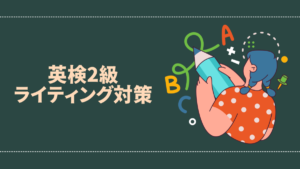昆虫観察やガーデニング、子どもとの自然散策で頻出する「虫」。英語では一般的に “insect” を使いますが、“bug” や “pest” など状況に応じた使い分けも大切です。本記事では基本語彙から種類別名称、会話例、イディオム、発音ポイントまで幅広く解説します。
1. Basic Terms for “Insect”
1.1. “insect” の定義と発音
“insect” は節足動物門昆虫綱の総称。英語発音は /ˈɪn.sɛkt/ で、最初の “in” に強勢を置きます。
- 例:An insect has three body parts: head, thorax, and abdomen.
1.2. “bug” と “pest” の違い
- “bug” は広く昆虫全般や小さな不快生物を指し、カジュアルに使います。
- “pest” は農作物を荒らす害虫や家に侵入する厄介者を指すビジネス・技術文脈向きの語です。
- 例:We need pest control for the ants invading our kitchen.
2. Common Insect Categories
2.1. Beetles, Butterflies, Ants
- “beetle”(ビートル/甲虫): A ladybug is actually a beetle.
- “butterfly”(バタフライ/チョウ): Monarch butterflies migrate thousands of miles.
- “ant”(アント/アリ): Ants live in colonies and communicate via pheromones.
2.2. Other Familiar Insects
- “bee”(ビー/ミツバチ): Bees pollinate flowers and make honey.
- “mosquito”(モスキート/蚊): Watch out for mosquitoes near the pond.
- “fly”(フライ/ハエ): Houseflies can spread disease.
3. Talking About Insects: Key Phrases
3.1. Spotting and Describing
- “I saw an insect crawling on the leaf.”
- “That bug has bright red stripes.”
3.2. Catching and Observing
- “Let’s catch butterflies in the meadow.”
- “Use a magnifying glass to examine the insect’s wings.”
4. Insect-Related Idioms
4.1. “a fly in the ointment”
小さな欠点やトラブルを指す表現。
> “Everything was perfect, but the weather was a fly in the ointment.”
4.2. “bee in one’s bonnet”
何かに取りつかれている状態を表します。
> “She has a bee in her bonnet about recycling.”
5. Scientific vs. Colloquial Usage
5.1. Scientific Context
分類学や研究では “insect order” や “arthropod” など専門用語を用います。
> “This insect belongs to the order Coleoptera.”
5.2. Everyday Conversation
カジュアルな会話では “bug” や “creepy-crawly”(虫全般を軽く呼ぶ俗語)を好んで使います。
> “There’s a creepy-crawly on your shoulder!”
6. Insect Control and Management
6.1. “pest control” の基本フレーズ
- “pest control service”:害虫駆除業者
- “apply insecticide”:殺虫剤を散布する
> “We hired pest control to deal with a termite infestation.”
6.2. 自然な防虫方法の紹介
- “Use citronella candles to repel mosquitoes.”
- “Plant marigolds to keep aphids away from your garden.”
7. Pronunciation Tips
7.1. “insect” の発音ポイント
- /ˈɪn/ の “i” は短く。「イン」
- /sɛkt/ の “e” は「エ」。語尾は弱く「セクト」
7.2. “mosquito” と “butterfly” のコツ
- “mosquito”: /mɒsˈkiː.təʊ/(英) /mɑːsˈkiː.toʊ/(米)
- “butterfly”: /ˈbʌt.ə.flaɪ/。強勢は最初の “but-” に。
8. Learning and Practice
8.1. Field Observation
公園や庭で虫を実際に観察し、英語でノートを取ってみましょう。
> “Today I observed three beetles under the oak tree.”
8.2. Flashcards and Apps
Insect vocabulary cardsを作成し、隙間時間に復習。昆虫図鑑アプリで英語名を学ぶのも効果的です。
9. Frequently Asked Questions
9.1. “Are spiders insects?”
No. Spiders are arachnids, not insects, because they have eight legs.
9.2. “What’s the difference between a bug and an insect?”
All bugs are insects, but scientifically “bug” refers to the order Hemiptera (true bugs). Colloquially, “bug” means any small arthropod.
10. Summary
英語で「虫」を表すには、一般的な “insect” からカジュアルな “bug”、そして害虫を指す “pest” まで状況に合わせて選びましょう。種類別名称、会話例、イディオム、発音のコツ、実践学習法を活用し、自然や旅行先で自信を持って虫について語れるようになりましょう!














